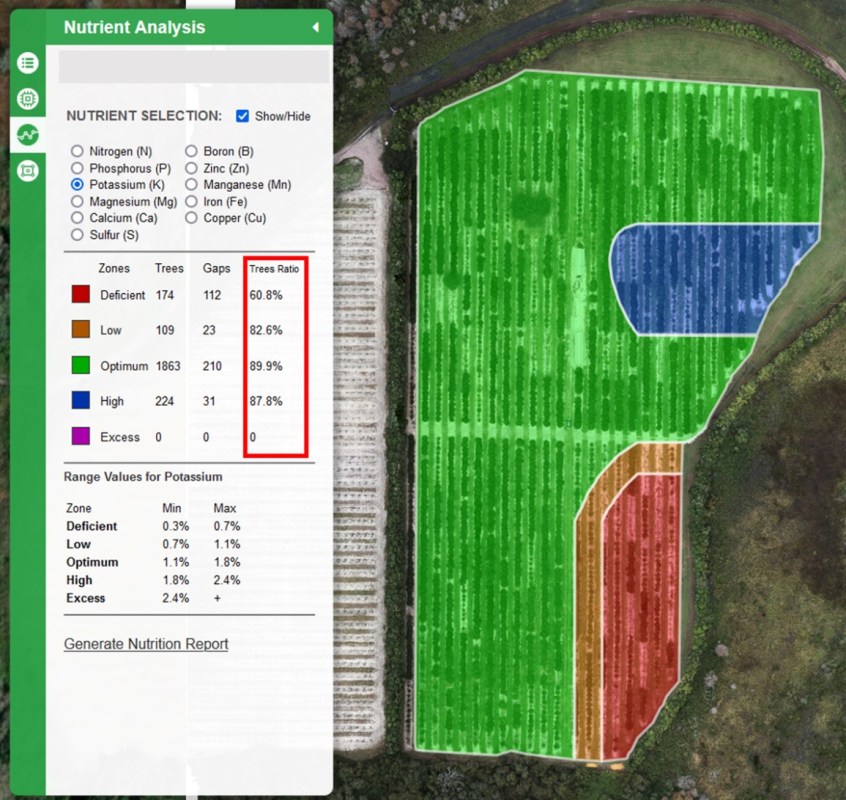Optimizing nutrition is important for tree health and productivity and can improve tolerance to stresses and diseases. Good nutrient management requires regular field monitoring to identify problems and examine crop responses. Leaves need to be collected and sent to a specialized laboratory for detailed information on macronutrients and micronutrients, which is time-consuming and costly.
It is recommended to conduct nutrient analyses in July and August after the spring flush (see https://edis.ifas.ufl.edu/pdf/SS/SS53100.pdf), but more frequent analyses of leaf nutrients may be necessary to determine deficiencies associated with HLB or other stress factors. However, this is not economically feasible. In addition to being time-consuming and costly, leaf nutrient analysis is prone to human error because of inconsistencies and bias during leaf sampling and the analysis process, which can compromise the interpretation and relevance of the data.
Agroview is Timely and Non Destructive
A non-destructive method was developed to determine citrus leaf nutrients quickly and efficiently and to create fertility maps compatible with variable rate technologies. This novel method can help overcome some of the limitations of the traditional methods of leaf nutrient analysis or complement them.
University of Florida Institute of Food and Agricultural Sciences (UF/IFAS) researchers used the spectral reflectance data collected by a drone equipped with a multispectral camera to create an artificial intelligence (AI)-based model to determine plant nutrient concentrations for individual trees. To help visualize the data, a cloud-based application, Agroview was utilized to create fertility maps with discrete management zones.

An example of a fertility map for potassium can be seen in Figure 1. Five zones (deficient, low, optimum, high and excess) were determined based on UF/IFAS guidelines. The tree ratio for each zone is the number of trees divided by the number of tree spaces (= trees + gaps; a gap is a place with no tree). If the tree ratio is 100%, it means that the entire area/zone has zero gaps.
For the grove in Figure 1, the tree ratio for the deficient and low zones is lower (60.8% and 82.6%, respectively) than the optimum and high zones (89.9% and 87.8%, respectively). Similar patterns can be observed for the nitrogen and phosphorus in this area. This indicates that this area of the grove might be problematic and require different management. Figure 2 shows a screenshot of the Agroview technology.
Original Article authored by Yiannis Ampatzidis and Ute Albrecht in Citrus Industry